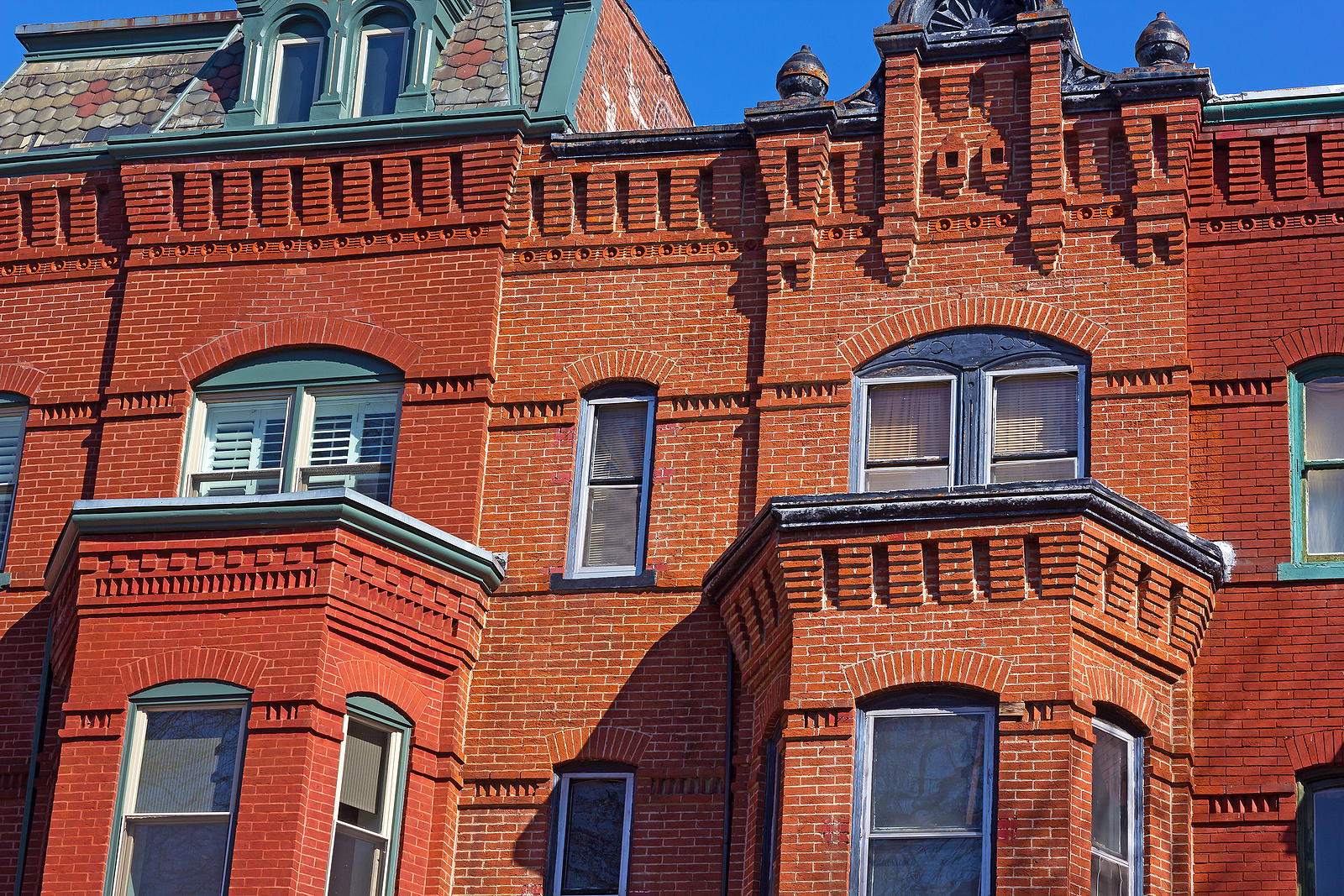Historic brick homes in DC are a testament to industrialization, urban expansion and evolving building codes. Following the Great Fire of London in 1666, the British made a decision to use brick instead of wood for its reconstruction. By the time America gained its independence, fires were already common as cities began to grow. For much of the 18th and 19th centuries, the switch to brick and other masonry was recognized as a necessary preventative measure in cities such as Boston, New York, and of course, Washington, DC. After 1814, historic brick was widely used in the DC area. By the early 1900s, the area had nearly 100 local brickyards, ensuring the continued use of brick and the development of DC’s historic brick neighborhoods and landmark buildings.
Why DC’s Historic Brick Houses Are Special
In the 18th and 19th centuries, securing bricks from other areas of the country was a logistical and financial burden. In the first six decades of the 19th century, bricks were mostly made by hand, but by 1870, bricks were predominantly machine-made, helping expand the brick construction boom. Baltimore and Philadelphia were early centers for pressed-brick manufacturing. Still, at the time, it was more efficient and economical to produce brick locally, leading to the vast brickyard industry in the DC area.
This local production is one of the reasons historic brick homes in DC are special. Regional production, including sourcing local materials, resulted in unique brick compositions, colors and strengths. By today’s standards, historic brick is quite soft, though “soft” is a relative term. The strength of historic brick combined with the expert craftwork of bricklayers resulted in beautiful, durable buildings that could stand the test of time.
Proper Maintenance and Restoration of Historic Brick Homes
There are several essential things to understand about DC’s historic brick homes. First, despite being incredibly strong structures, they require maintenance and upkeep for both structural and aesthetic reasons. Second, maintenance and repair of historic brick requires the assistance of a historic brick home expert, who understands the need to use only the traditional materials in the restoration process.
The oldest of DC’s historic brick neighborhoods have solid brick walls built in multiple layers. These are called wythes. The interior of the walls is covered with plaster, and the exterior load-bearing walls do not contain iron, steel, or any reinforcing materials. Unlike today’s homes, where brick is a veneer over a structure of wood and metal, historic homes utilize the brick as the structure itself. Protecting the structure's integrity is of the utmost importance - and the historic brick experts have the tools, skills, and proper materials to ensure this happens.
Tuckpointing the Traditional Way
Keeping your historic brick home in top condition means ensuring the mortar remains intact with periodic repair. Damaged old bricks should be replaced, but due to their unique composition, they should never be replaced with modern brick. Today’s brick and mortar are harder than historical materials, and the difference in compressive strength results in the contemporary materials exerting too much pressure on the existing brick, causing it to crack, crumble, and ultimately fail.
Annual inspections of your mortar joints can detect minor problems that are usually easily corrected. Tuckpointing keeps your brick and mortar intact, preventing water infiltration and stopping further damage to your brick and interior walls. However, these small fixes don’t eliminate the need for complete mortar replacement every few decades. After years of exposure to DC’s elements, mortar breaks down.
Tuckpointing removes the damaged mortar and replaces it with the traditional lime-based mortar mix. When done correctly, the crisp, fresh lines of mortar will renew the appearance of your home, adding a tremendous amount of curb appeal to your property. Most importantly tuckpointing ensures the structural integrity of your historic brick house for many decades to come.
Renaissance Development, experts in tuckpointing historic brick homes in DC, offers complimentary consultations. Feel free to call us to learn more about traditional tuckpointing methods. Contact us and ask about our special Winter Promotion, (running through February 29th) which gives you an extra 15% off when accepting a proposal for any interior or exterior project.






